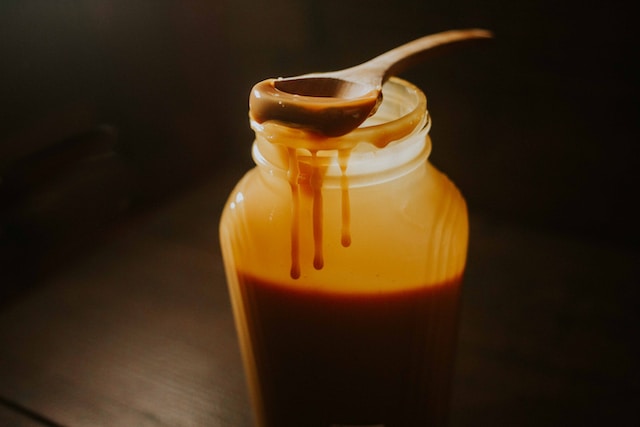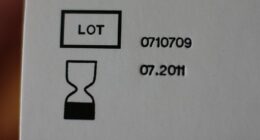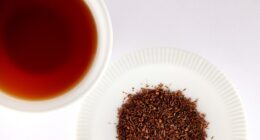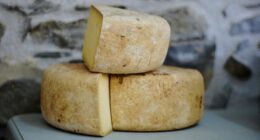Caramel is made by heating sugar until it reaches a deep amber color, resulting in a rich and slightly bitter flavor. Butterscotch is created by combining butter and brown sugar, resulting in a smooth and creamy texture with hints of vanilla.
TL;DR Caramel Vs. Butterscotch
Caramel is made by heating sugar, often with butter and cream, resulting in a rich, sweet flavor with a slightly bitter undertone. Butterscotch is made by heating brown sugar and butter, offering a smooth, buttery, and sweet flavor with hints of vanilla.
The main difference lies in the type of sugar used and the flavor profile, with caramel having a deeper brown color and butterscotch being lighter.
What is caramel?
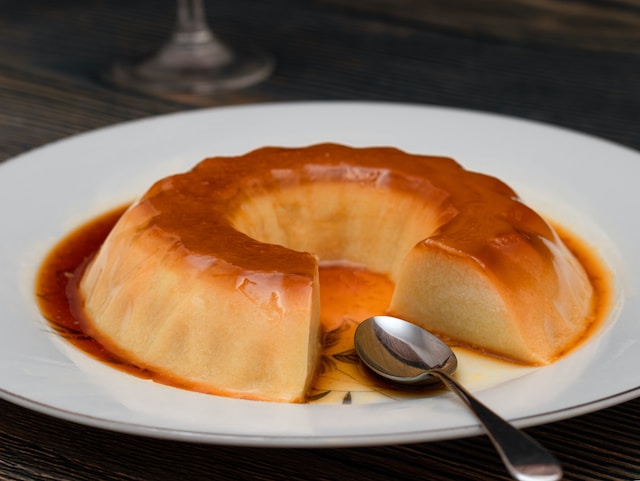
Caramel is a rich and gooey concoction made from heating sugar until it reaches the point of caramelization. This process involves applying heat to sugar until it transforms from its solid state into liquid gold.
Caramel’s flavor profile can be described as deeply sweet with notes of toffee and molasses dancing on your taste buds. It offers both sweetness and depth.
What is butterscotch?
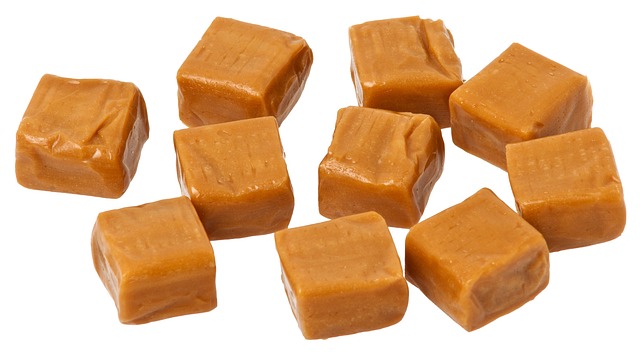
Butterscotch is made by combining melted butter with brown sugar, creating a rich and creamy caramel-like flavor. The addition of vanilla extract adds depth to the taste profile, while a pinch of salt helps to balance out the sweetness.
Caramel Vs. Butterscotch – Key differences
| Caramel | Butterscotch | |
|---|---|---|
| Main Ingredients | Caramel is made from heating sugar, often with butter and cream. | Butterscotch is made from heating brown sugar and butter. Sometimes, cream is also added. |
| Flavor | Caramel has a rich, sweet flavor with a slightly bitter undertone due to the caramelization of sugar. | Butterscotch has a smooth, buttery, and sweet flavor with hints of vanilla. It is generally less bitter than caramel. |
| Color | Caramel has a deep brown color, ranging from golden to dark brown. | Butterscotch has a lighter brown color compared to caramel, often with a golden hue. |
| Candy Variants | Caramel is used to make various candies, such as caramel apples, caramel chews, and caramel sauces. | Butterscotch is commonly used in making butterscotch candies, butterscotch chips, and butterscotch sauces. |
| Common Uses | Caramel is commonly used as a topping for desserts like ice cream, in candies, and as a flavoring in beverages like caramel lattes. | Butterscotch is often used as a flavoring for desserts, especially in cookies, puddings, and ice creams. |
| Production Method | Caramel is achieved by heating sugar to the point of caramelization, and then adding butter and cream. | Butterscotch is made by heating brown sugar and butter together until they melt and combine. Cream may also be added to achieve a creamier texture. |
| Aroma | Caramel has a strong and distinct aroma, characteristic of the caramelization process. | Butterscotch has a sweet and buttery aroma, often with notes of vanilla. |
| Origin | The word "caramel" is derived from the Latin word "cannamellis," meaning "sugar cane" and has a long history in culinary use. | The term "butterscotch" originated in the early 19th century, and the exact origin of the name is debated, but it likely relates to the "scotch" part, referring to the use of Scotch whiskey or the Scottish origin of the recipe. |
| Dairy Content | Caramel may contain cream or milk, making it richer and creamier. | Butterscotch can also contain cream, but it can be made without it, resulting in a firmer texture. |
| Popular Desserts | Popular desserts using caramel include caramel flan, caramel popcorn, and caramel brownies. | Popular desserts using butterscotch include butterscotch pudding, butterscotch cookies, and butterscotch sundaes. |
How to make Caramel?
Making caramel at home is relatively simple, but it requires careful attention and precision to avoid burning the sugar. Here’s a basic recipe for making classic caramel:
Ingredients:
- 1 cup granulated sugar
- 1/4 cup water
- 6 tablespoons unsalted butter (cut into small pieces)
- 1/2 cup heavy cream (at room temperature)
- 1 teaspoon pure vanilla extract (optional)
- A pinch of salt (optional)
Instructions:
- Prepare the Ingredients: Measure out all the ingredients before you start as the process moves quickly once the sugar starts caramelizing.
- Heat the Sugar: Combine the granulated sugar and water. Stir gently to wet all the sugar, but avoid splashing it on the sides of the pan. This helps prevent crystallization. If sugar crystals form on the sides of the pan, you can use a wet pastry brush to brush them down.
- Cook the Sugar: Place the saucepan on the stove over medium heat. Allow the sugar to heat up and dissolve completely. Once it starts boiling, do not stir it anymore. Instead, you can swirl the pan gently to ensure even heating.
- Caramelization: As the sugar cooks, it will gradually start to change color. The sugar will go from clear to pale amber and then to a rich golden-brown. Keep a close eye on it, as it can quickly turn from caramel to burnt if left unattended.
- Add Butter and Cream: Once the sugar has reached your desired caramel color, add the small pieces of butter to the pan. Be cautious as the mixture will bubble up when the butter is added. Stir gently with a heat-resistant spatula until the butter is fully melted and incorporated into the caramel.
- Incorporate Cream: Remove the saucepan from the heat and carefully pour in the room-temperature heavy cream while stirring continuously. Be cautious as the mixture will bubble vigorously. Continue stirring until the cream is fully combined with the caramel to create a smooth sauce.
- Add Flavor (Optional): Stir in the pure vanilla extract and a pinch of salt if desired. These ingredients can enhance the flavor of the caramel, but they are optional.
- Cool and Store: Allow the caramel sauce to cool slightly before transferring it to a heatproof container or jar. It will thicken as it cools. You can store the caramel sauce in the refrigerator for up to a couple of weeks.
Tips:
- Use a saucepan with a light-colored bottom, so you can easily monitor the color change of the sugar.
- Be cautious when working with hot caramel as it can cause severe burns. Keep children and pets away from the cooking area.
- The caramel will continue to darken even after you remove it from the heat, so consider this when determining your desired color.
- Homemade caramel is perfect for drizzling over ice cream, cakes, pancakes, and other desserts, or for use in various sweet treats.
How to make Butterscotch?
Making butterscotch at home is quite simple and requires only a few ingredients. Here’s a basic recipe for homemade butterscotch sauce:
Ingredients:
- 1/2 cup (1 stick) unsalted butter
- 1 cup packed light brown sugar
- 1 cup heavy cream
- 1 teaspoon pure vanilla extract
- A pinch of salt (optional)
Instructions:
- Melt the Butter: In a medium-sized saucepan, melt the unsalted butter over medium heat. Stir occasionally to ensure even melting.
- Add Brown Sugar: Once the butter has completely melted, add the packed light brown sugar to the saucepan. Stir the mixture until the sugar is fully dissolved and combined with the butter. Let it cook for 2-3 minutes, allowing the mixture to come to a gentle simmer.
- Incorporate Heavy Cream: Carefully pour the heavy cream into the saucepan with the butter and sugar mixture. Be cautious, as the mixture may bubble up when the cream is added. Stir continuously to ensure the cream is fully incorporated and the sauce becomes smooth.
- Simmer the Sauce: Lower the heat to medium-low and let the butterscotch sauce simmer for an additional 5 minutes. Stir occasionally to prevent the bottom from burning.
- Add Vanilla and Salt: Remove the saucepan from the heat and stir in the pure vanilla extract. Adding a pinch of salt is optional, but it can enhance the flavor of the butterscotch. Stir until everything is well combined.
- Cool and Store: Allow the butterscotch sauce to cool slightly before transferring it to a heatproof container or jar. As it cools, the sauce will thicken. You can store the butterscotch sauce in the refrigerator for up to a couple of weeks.
Tips:
- Use a heavy-bottomed saucepan to prevent the butterscotch from burning or sticking to the bottom.
- Stir the sauce continuously, especially after adding the cream, to ensure a smooth texture and prevent any lumps from forming.
- Homemade butterscotch sauce is a versatile topping for ice cream, pancakes, waffles, cakes, and other desserts. You can also use it as a dip for fruit or drizzle it over popcorn for a delicious treat.
Image Credits
Featured Image By – Matt Diosdado on Unsplash
Image 1 By – Mahmoud Fawzy on Unsplash
Image 2 By – David Greenwood-Haigh from Pixabay
